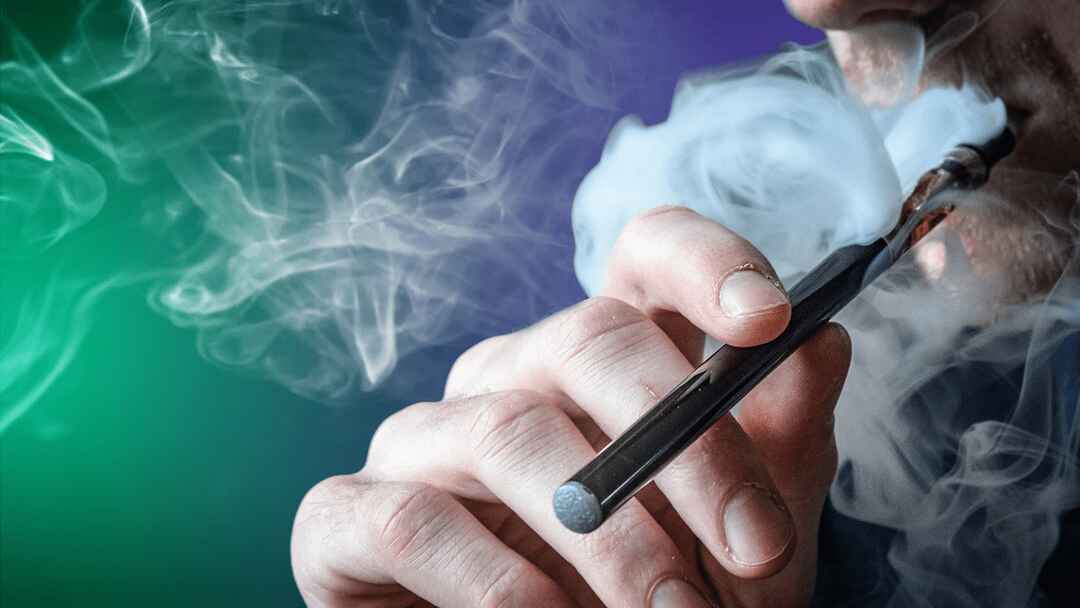
As Vaping-Related Illnesses Increase, Trump Moves to Ban Flavored E-Cigarettes
Over the last several months, six deaths have been connected to vaping-related illnesses. The mysterious lung illness, which presents itself with a persistent cough and breathing problems, has potentially hospitalized another 450 people across the country.
As the news of this mysterious illness travels nationwide, cities and even federal agencies are moving to ban e-cigarettes. President Trump announced at a White House meeting that he would move to ban the sale of flavored vaping products in an effort to reduce the risk for our nation’s youth.
Shortly after Trump’s announcement, Andrew Cuomo, governor of New York, announced that he would ban the in-state sale of flavored e-cigarettes. The emergency order was issued starting on September 15th.
Cuomo had previously signed a bill that raised the legal age to purchase e-cigarettes from 18 to 21.
New York is the second state to join in banning flavored e-cigarettes; Michigan issued a ban earlier this month, while legislation to ban flavored products has also begun in Massachusetts and California. And with so many cases of vaping-related illnesses and deaths on the rise, it is likely that other states in the union will be soon to follow.
President Trump and US Secretary of Health and Human Services Alex Azar prepared for backlash after the announcement of an impending federal ban, acknowledging how large the vaping business in the United States has become.
In a statement released by Azar, he wrote, “We intend to clear the market of flavored e-cigarettes to reverse the deeply concerning epidemic of youth e-cigarette use that is impacting children, families, schools, and communities.”
While bans loom, the Federal Drug Administration (FDA) has also announced plans to remove all non-tobacco e-cigarette flavors from the market. Although the process could take several weeks, the FDA guidelines would only permit tobacco-flavored products to be sold—eliminating the thousands of flavor options that are readily available in smoke shops and online.
With so many sweet, fruity flavors currently for sale, hordes of teenagers have gotten hooked. The appeal of these “kid-friendly” flavors is so high, in fact, that an estimated 3.6 million children and teenagers have used flavored e-cigarettes.
What Are the Risks of Vaping?
Marketed as a safe alternative to traditional tobacco smoking, especially to those who are trying to quit, many children and teens are not aware of the risks associated with vaping. Most believe that the act of vaping is harmless, and that they are just inhaling flavored vapor—even though one Juul pod, a popular brand of e-cigarette—contains 20 cigarettes’ worth of nicotine.
Last week, Juul was publicly warned by the FDA for marketing their products as a safe alternative to smoking without FDA permission. Juul Labs, Inc.—which is just one of countless vaping-related companies—generated $2 billion in revenue last year alone. They have forecasted their numbers to nearly triple this year.
Juul also recently came under fire for creating “young-looking” products that touted those sweet and fruity flavors, appealing significantly to the teen demographic. At that time, Juul took steps to remove its presence on social media, among other precautions they hoped would limit teens’ use of their products.
It’s no secret that vaping has become a huge business, but as it has grown in popularity, the ill effects of its associated products have taken center stage.
Teens and adults in newscasts across the country are now sharing their experiences, warning other kids of the real dangers of vaping. One of several teens hospitalized with severe lung disease, a teenager from Illinois claimed that doctors said his lungs were “like a 70-year-old’s” after two years of vaping.
As we learn more about the dangers of vaping, it is clear that e-cigarettes present significant risk to our health, and that they should not be considered a safe alternative for smoking cessation.